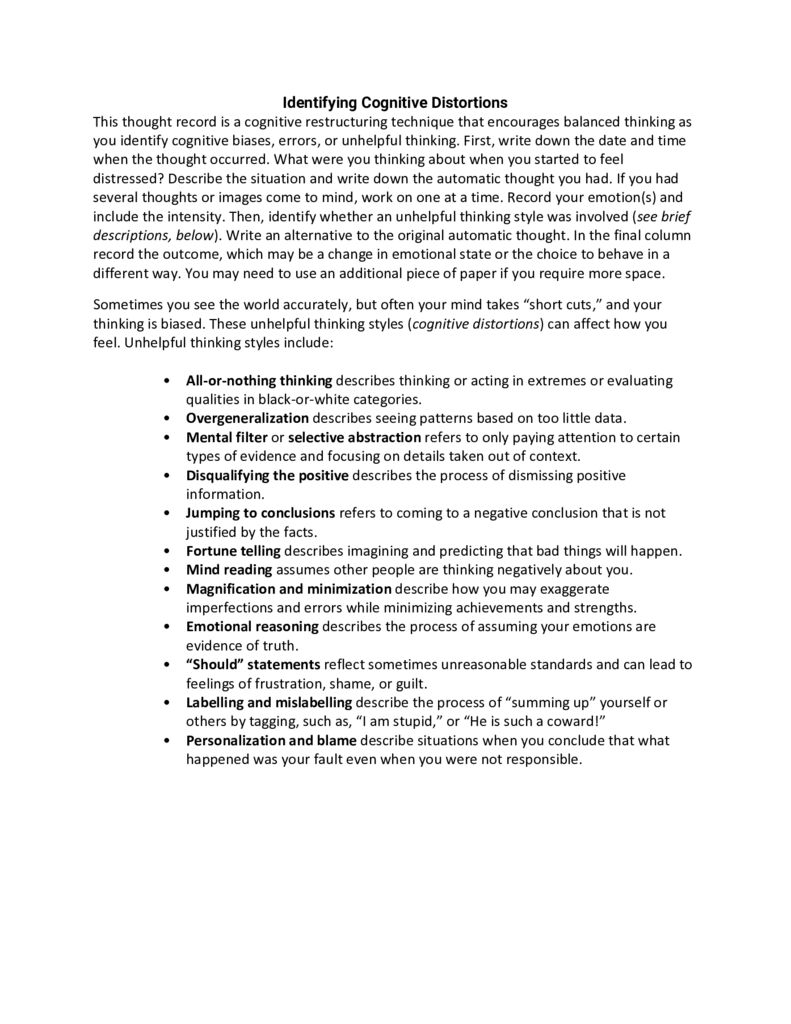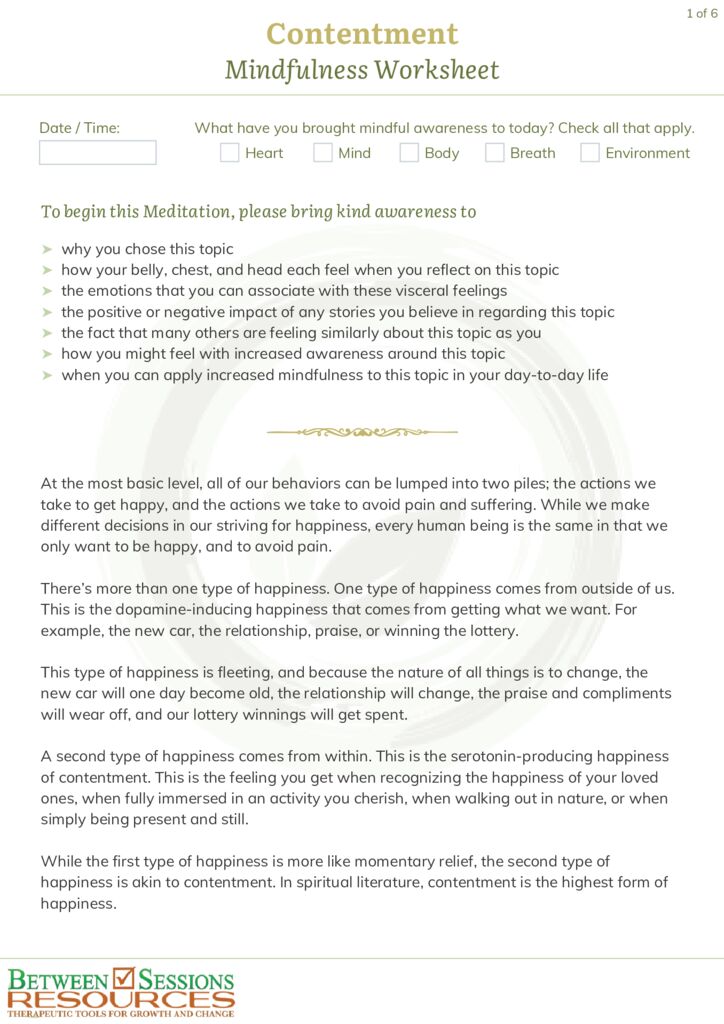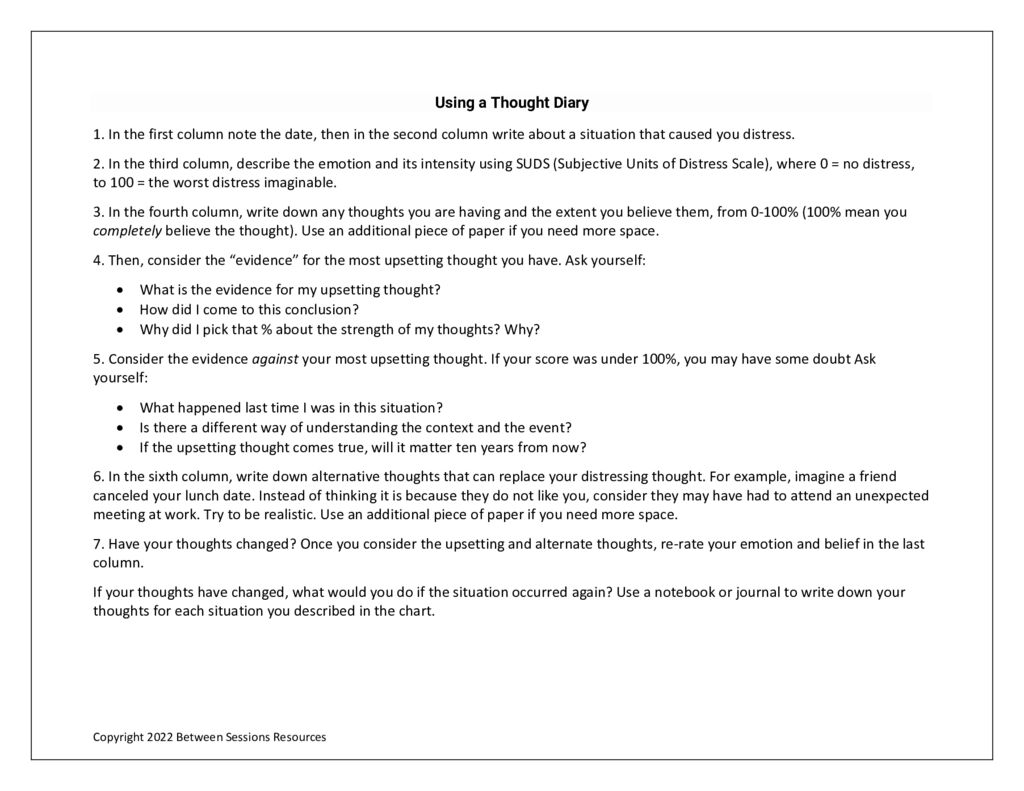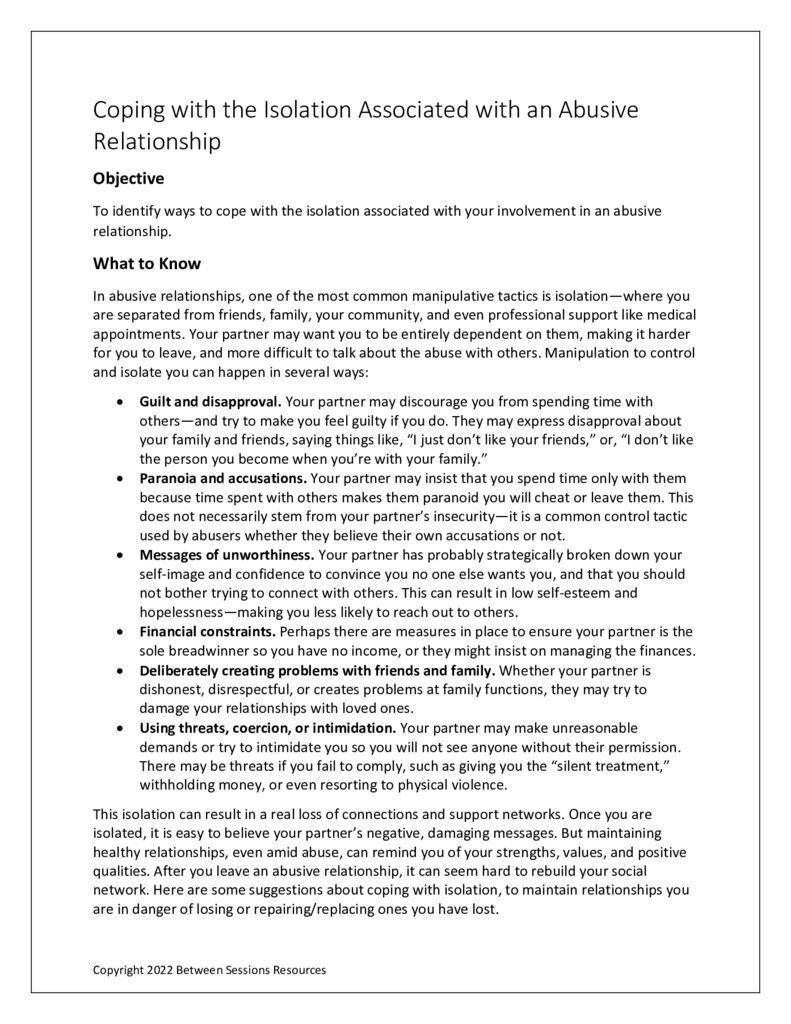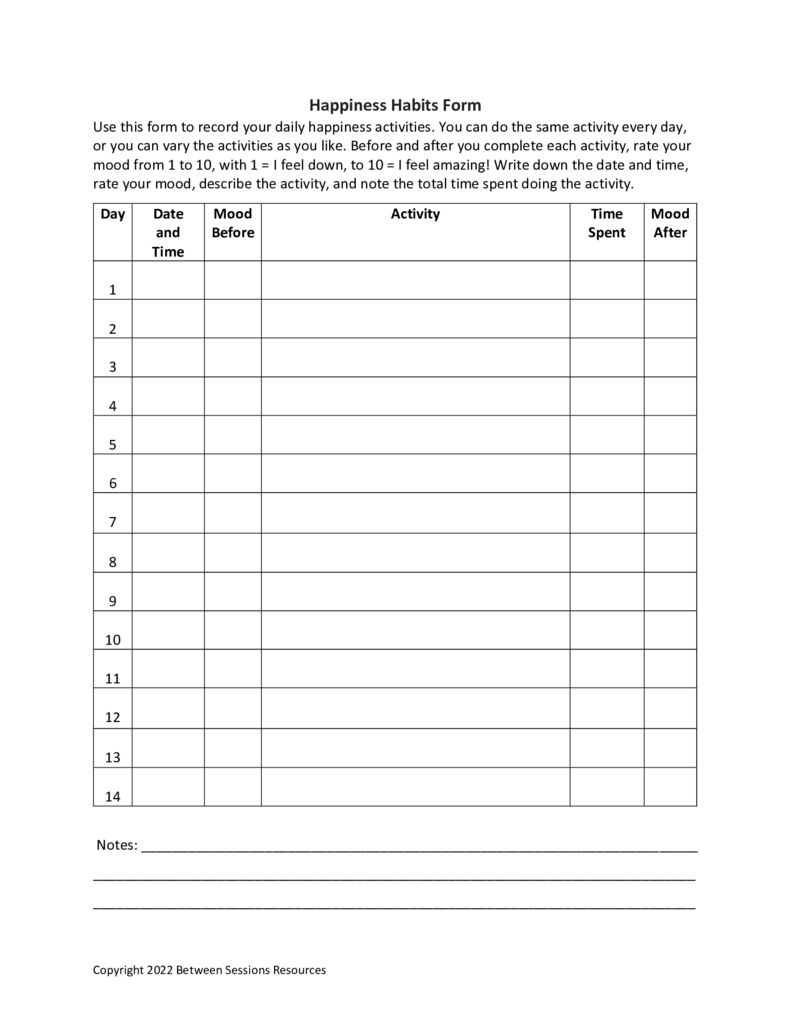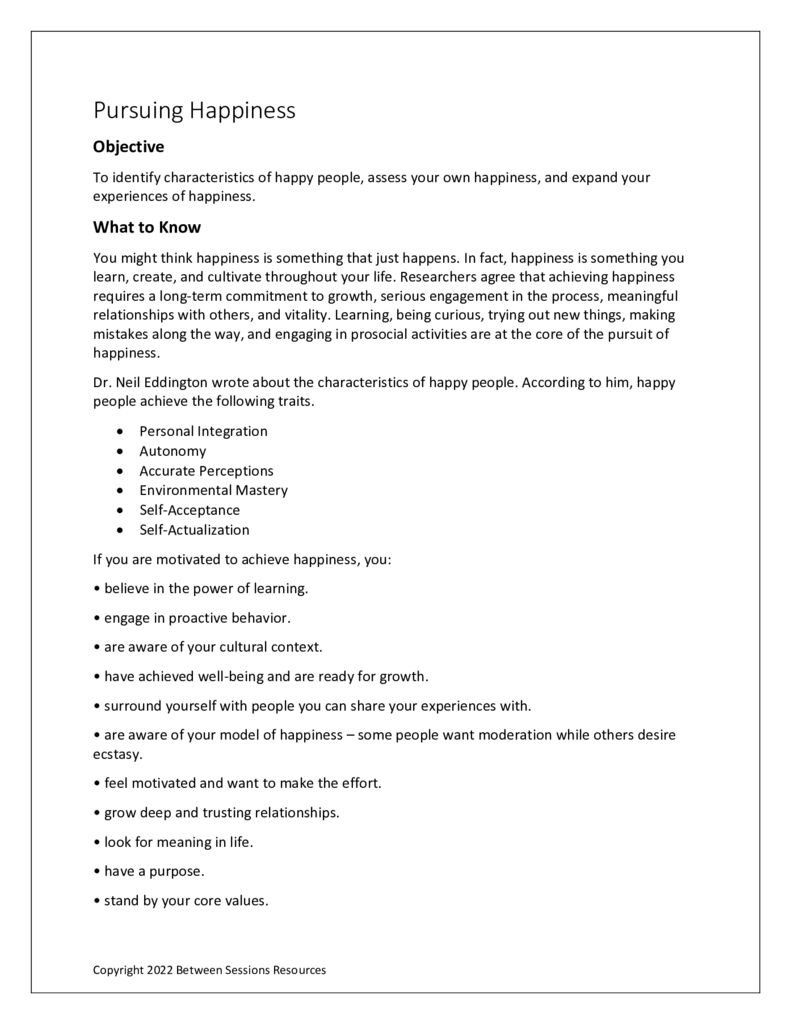This worksheet teaches clients the technique of cognitive restructuring. The different kinds of cognitive distortions are explained and then clients are asked to keep a chart where they identify their automatic thoughts and substitute more realistic alternative thoughts. (1222. CBT. cognitive restructuring thought changing)
This worksheet is designed to help people develop a daily habit of relaxation to reduce stress and improve their physical and mental health. The worksheet suggests various relaxation activities and includes a chart to help people keep track of them. (1222. relaxation response, stress reduction)
This worksheet is designed to help people explore the meaning of contentment. (1122, mindfulness, happiness)
This 7-column form is designed to help people keep track of the situations and thoughts that cause them distress and create “rebuttals” to thoughts that are dysfunctional. The form is frequently used in CBT therapies for anxiety disorders and depression. (1122, anxiety, exposure therapy, CBT, dysfunctional thinking, emotional regulation)
This tracking tool helps your clients identify and track the triggers that precede their problem behaviors. The chart lets clients track up to 8 triggers for an entire month. (1122, anxiety, data recording, assessment, depression, addiction, emotional regulation)
This worksheet is designed for people whose abusive relationship has caused them to be socially isolated. The worksheet explains how this commonly happens and then suggests activities for people to connect with people who can be supportive and understanding. (1022, abuse, relationships, marriage counseling)
This worksheet explains the concept of the “window of tolerance,” which is the optimal zone of arousal to function in a healthy manner. People who have experienced trauma may have a relatively narrow window of tolerance. On either side of the “window” are hyperarousal, a state of activation and energy, and hypoarousal, a slow down or even a shutdown state of response. This worksheet gives people suggestions on how to expand and stay within their window of tolerance. (1022, PTSD, trauma, emotional regulation)
This data collection form helps clients track activities that make them happy for two weeks. (1022, happiness, positive psychology, mood tracking)
This worksheet helps clients identify characteristics of happy people, assess their own happiness, and expand their experiences of happiness. (1022, happiness, positive psychology)
This worksheet allows clients to practice strategies for becoming more optimistic, including applying Martin Seligman’s “ABCDE” technique. (1022, learned optimism, positive psychology, PTSD, trauma)

